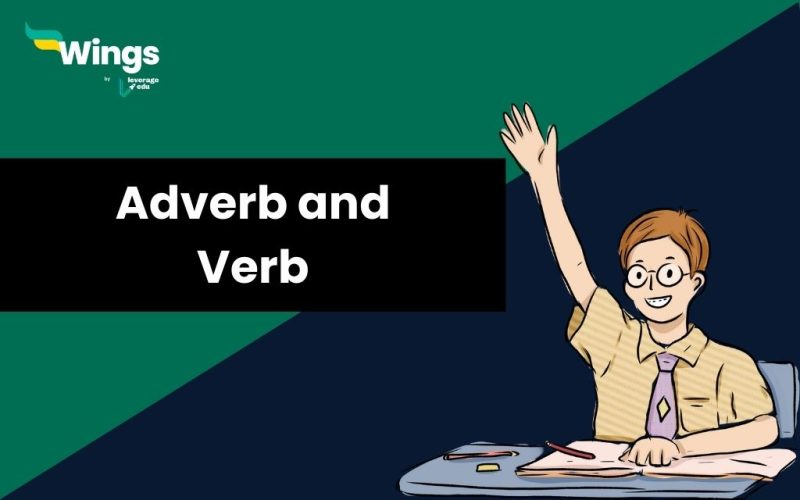Adverb and Verb: In this vast pool of English Grammar, verbs and adverbs are two types of speech that are used alongside sentences. However, these two categories have similar names carrying quite different meanings from each other. Today we will explore various details regarding the adverb and verbs in the blog post below. You will get to know about the meaning of adverbs and verbs and the difference between them with multiple examples.
This Blog Includes:
What are Adverbs?
An adverb is a word that modifies or describes a verb, an adjective or another adverb indicating time, place, degree, frequency, manner or certainty. They give more information about how something is done or is done to the true degree.
Also Read: Adverbs: Definition, Types, Use, Examples & Exercises
Function of Verb
Verbs play an important role in making sentences meaningful and conveying a state of occurrence. They typically express the main event or happening in a sentence. They indicate the time frame in which an act is taking place and be conjugated to reflect tense, voice or mood. The verbs make the sentences more complete, meaningful and understandable to the listener.
Also Read: Compound Words
Types of Adverbs
There are various types of adverbs.
✅ How an action is being done.
✅ When an action is being performed.
✅ What interval action is being performed?
✅ Where is something happening
✅ Indicating intensity of action.
Also Read: Types of Adverbs: Use, Examples & Exercises
What are Verbs?
A verb is a word that is used to express an action, occurrence or state of being. It explains the main part of a sentence, that is, showing the subjects doing and being. You can easily understand them as one-word commands, such as eating, sleeping, crying etc.
Also Read: All about Regular and Irregular Verbs
Types of Verbs
There are typically three categories of verbs. Find the meaning of each with given examples:
✅ Action Verbs
Action verbs show the performance of an action. They are further divided into transitive verbs and intransitive verbs.
✅ Modal Verbs
They are used to express ability, possession, possibility, permission or obligation etc.
✅ Linking Verbs
They are used to link the subject of the sentence to additional information for example seem, be and become.
Also Read: Verb Preposition with Meaning, List, Examples and Exercises
Function of Adverbs
The adverbs are used to modify verbs, adjectives and other adverbs. They mainly answer questions such as how, when, where and to what extent. They help in providing detail or clarity in the sentences.
Also Read: Interrogative Adverb Meaning, Examples & Exercises in English
How to Differentiate between Adverb and Verb
Even though both are very similar in their names, adverbs can be understood as descriptive words and verbs can be understood as action verbs.
Take into consideration the function a word serves in the phrase to distinguish between verbs and adverbs. The term is probably a verb if it describes an activity or a state of being. It’s probably an adverb if it describes or alters the action or state of being. Furthermore, unlike verbs, many English adverbs finish in -ly.
| Verbs | Adverbs |
| Are used to express action, occurrence or state of being | Are used to modify verbs, adjectives or other adverbs. |
| They are the main verbs in a sentence | They appear next to the modified word. |
| They can be conjugated to reflect tense, voice or mood | They do not change form to reflect tense, mood or voice |
| Example: become, seem, think | Example: now, then, enough, too |
Explore this blog: Rules for Prepositions in English Grammar with Examples
How to Identify Verbs and Adverbs
The way to identify adverbs and verbs in a sentence can be found below:
Verbs are used to express the state of being and often the main event of the sentence. On the other hand, adverbs modify verbs, and other adverbs and adjectives also provide additional information for the time, place, manner, degree, and frequency of the action being described.
Explore this blog: Abstract Nouns: Definition, Examples and Usage
Examples of Adverbs
Here are some examples of adverbs and verbs listed below:
1. She ran quickly to catch the bus.
2. The cat moved quietly through the grass.
3. He handled the fragile glassware carefully.
4. The phone rang suddenly in the quiet room.
5. The new machine processes data efficiently.
Examples of Verbs
Here are some examples of verbs listed below for your easy reference.
1. He likes to run in the morning.
2. She eats a healthy breakfast every day.
3. They write poems for fun.
4. We love to dance at parties.
5. I need to study for my upcoming exams.
Related Reads
| English for Competitive Exams | Subject-Verb Agreement |
| English Vocabulary Test | How to Improve English Vocabulary? |
| Class 10th Grammar | CBSE Class 10 Syllabus |
FAQs
A verb expresses an action—either mental or physical—or a state of being and takes the place of the predicate in a phrase. A modifier that adds details to a verb, adjective, phrase, or other adverb is called an adverb.
The verb is usually the major word in a phrase, and the adverb serves to clarify what the verb means in more detail.
It is an adjective if it modifies a noun or a pronoun. It’s an adverb if it’s altering anything else.
We hope this blog on “adverb and verb” provided you with all the information. To further advance your grammar knowledge and read more informative blogs, check out our Learn English page, and don’t forget to follow Leverage Edu.
 One app for all your study abroad needs
One app for all your study abroad needs















 60,000+ students trusted us with their dreams. Take the first step today!
60,000+ students trusted us with their dreams. Take the first step today!

